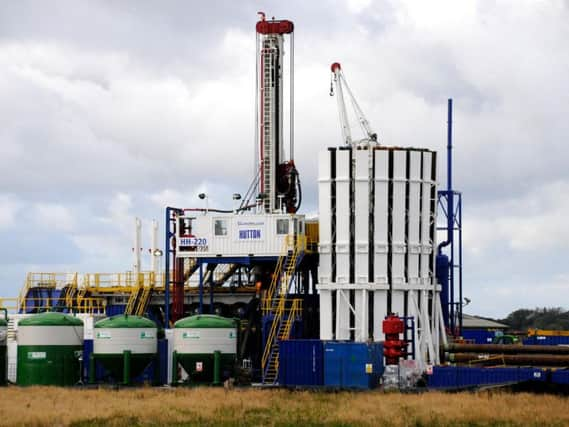Space restriction could cut fracking gas yield


The report from Durham University says that increased housing, rivers and large pieces of infrastructure across the Bowland Shale area will restrict the number of fracking sites.
The research for the consortium ReFINE (Research Fracking in Europe) shows that within a typical 10km by 10km square, only a quarter of the area could accommodate wells when the above features were factored in.
Advertisement
Hide AdAdvertisement
Hide AdSarah Clancy, the study’s lead author and a postgraduate student in the Department of Earth Sciences at Durham University, said: “Our findings suggest the number of wells could be limited by existing and immovable infrastructure which, in turn, would reduce the amount of shale gas that could be extracted.”
Fylde groups protesting against fracking at the Preston New Road site said this study suggests that fracking may not be economical.
Claire Stephenson, from Preston New Road Action Group in Lancashire, said: “We are not surprised that fracking researchers are now cautiously reducing their estimates of the amount of recoverable gas in the Bowland Shale.
“We have repeatedly highlighted the large number of wells that would be required to extract even a meagre amount of gas, and what that would mean for the Fylde and beyond. Francis Egan has even talked of turning the Fylde into “the largest gas field in Western Europe”, but it seems as though his plans may be thwarted by a combination of population density and the limitations imposed by existing infrastructure.
Advertisement
Hide AdAdvertisement
Hide Ad“With the collapse in wholesale gas prices over the last few years and the high costs forced onto this industry, here in the UK, by the factors described in this study, it seems likely that fracking is dead in the water before it even begins.”
But supporters of fracking say the report was “premature” and test drilling was needed to see how much gas was really recoverable. Backing Fracking said the report was not necessarily a blow to developing a shale gas industry in the area. A spokesman said: “We welcome thorough, independent, and academically robust research and the contribution it can make to the shale gas debate.
“This particular paper appears to have been published prematurely given that, without the technical data obtained by drilling and test-fracking some more wells, it is probably not possible to make the sort of assumptions that the student author has at this stage of shale gas exploration.
“However, it does open the door to the potential for siting a smaller number of bigger well pads in the future, each with more and longer wells drilled in different directions to access a larger accumulation of trapped gas.”
Advertisement
Hide AdAdvertisement
Hide AdA spokesman for onshore oil and gas industry body UKOOG said: “We note the research undertaken by REFINE. UKOOG undertook a similar exercise earlier this year using real data from across the US (not in one state as per the REFINE report) and estimated that the number of pads in a typical 10km by 10km block could would take up 0.2 per cent of the land area.
“As an industry we are at the exploration phase and so understanding the geology is still key. Using a simple model based on US pad sizes shows we can easily cut imports by 50 per cent by using only 0.2 per cent of the land in each block.”